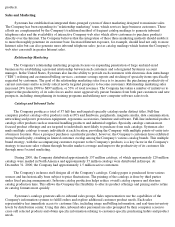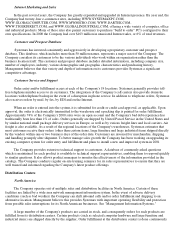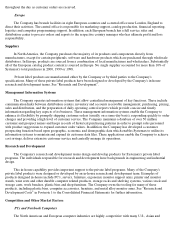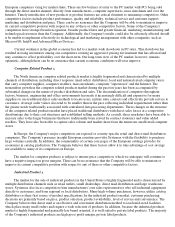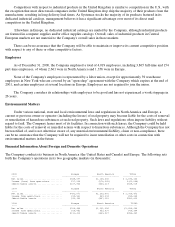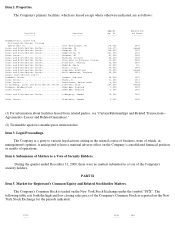Circuit City 2000 Annual Report Download - page 16
Download and view the complete annual report
Please find page 16 of the 2000 Circuit City annual report below. You can navigate through the pages in the report by either clicking on the pages listed below, or by using the keyword search tool below to find specific information within the annual report.million in short-term bank borrowings. In 1998, the Company used $28.6 million of cash to purchase shares of its
common stock.
The Company maintains uncommitted credit lines with financial institutions totaling approximately $90 million
in the United States and Europe, borrowings under which are available at the discretion of the lenders.
In December 2000 the Company entered into a Revolving Credit Agreement with its domestic banks to provide
an uncommitted credit facility of $70 million, secured by all of the Company's domestic accounts receivable. The
agreement, originally expiring on January 31, 2001, was later extended to May 31, 2001. This facility replaces
previously uncommitted, unsecured lines of credit the Company maintained with these banks, and is available for its
domestic operations. The agreement provides, at the Company's option, interest based on LIBOR or the prime rate and
contains certain covenants and restrictions, including limitation on the payment of dividends and on business
acquisitions. At December 31, 2000 there was $38,000,000 outstanding under this agreement. Included in this
agreement, the Company may have outstanding letters of credit equal to the amount of the total line less outstanding
borrowings. At December 31, 2000 there were $2,405,000 of outstanding letters of credit.
The Company also entered into a £15,000,000 ($22,395,000 at the December 31, 2000 exchange rate) multi-
currency credit facility with a financial institution in the United Kingdom in January 2000, which is available to its
United Kingdom subsidiaries. Drawings under the facility may be made by overdraft, trade acceptance or loan. The
facility is secured by assets of certain of the Company's United Kingdom subsidiaries and a guaranty from the
Company. At December 31, 2000 there were £7,068,000 ($10,559,000) of borrowings outstanding under this line.
As a result of the net loss incurred in the year ended December 31, 2000, the Company applied for and has
received a refund of approximately $25 million from the Internal Revenue Service. The refund was used to reduce the
Company's short-term bank borrowings. As of March 23, 2001, the Company had total short-term borrowings
outstanding of $16.1 million, of which $15.8 million was in the United States.
The Company has accepted a proposal from a financial institution for a three-year committed domestic
borrowing facility to replace the existing Revolving Credit Agreement, secured principally by the Company's eligible
accounts receivable and inventory balances. Closing is subject to due diligence and negotiation of a definitive
agreement. The Company believes it has access to adequate funds for continued operations and growth through its
available cash balances and funds generated by operations and secured lines of credit maintained with financial
institutions but there can be no assurance that the Company will reach a satisfactory agreement for a new facility.
The Company is party to certain litigation, as disclosed in "Commitments and Contingencies" in the Notes to
Consolidated Financial Statements, the outcome of which the Company believes will not have a material adverse effect
on its consolidated financial statements.
Recent Accounting Developments
Statement of Financial Accounting Standards (SFAS) No. 133, Accounting for Derivative Instruments and
Hedging Activities, is effective for all fiscal years beginning after June 15, 2000. SFAS 133, as amended, establishes
accounting and reporting standards for derivative instruments, including certain derivative instruments embedded in
other contracts and for hedging activities. Under SFAS 133, certain contracts that were not formerly considered
derivatives may now meet the definition of a derivative. The Company will adopt SFAS 133 effective January 1, 2001.
The Company currently does not make use of derivative instruments as defined by SFAS No. 133. If the Company does
not increase the utilization of derivative instruments, the adoption of this standard is not expected to have a significant
impact on the financial position, results of operations, or cash flows of the Company.
In December 1999, the Securities and Exchange Commission ("SEC") issued Staff Accounting Bulletin No. 101
("SAB 101"), "Revenue Recognition in Financial Statements." SAB 101 summarizes certain SEC views in applying
generally accepted accounting principles to revenue recognition in financial statements. The Company adopted SAB
101 in the fourth quarter of 2000. The adoption did not have a significant effect on the consolidated results of
operations or financial position.
Implications to the Company From the Adoption of a European Common Currency


